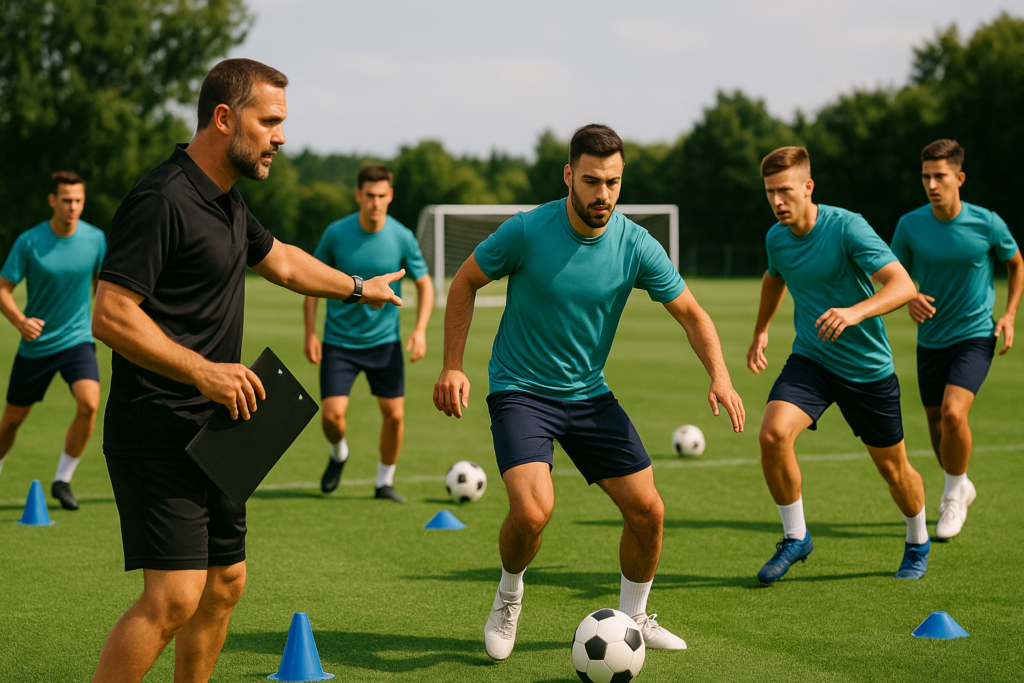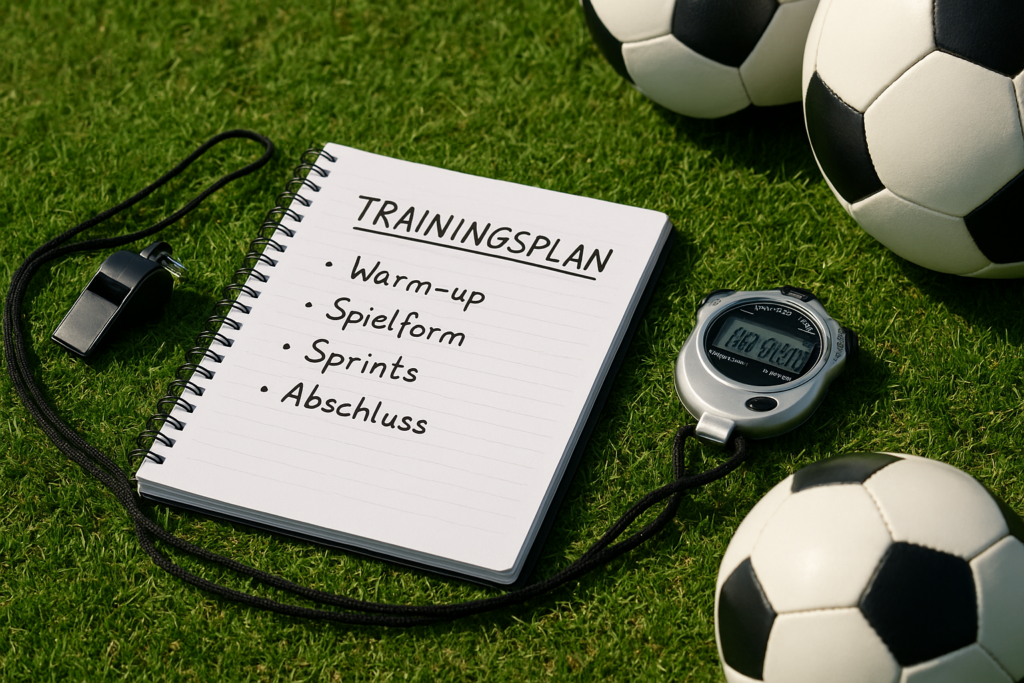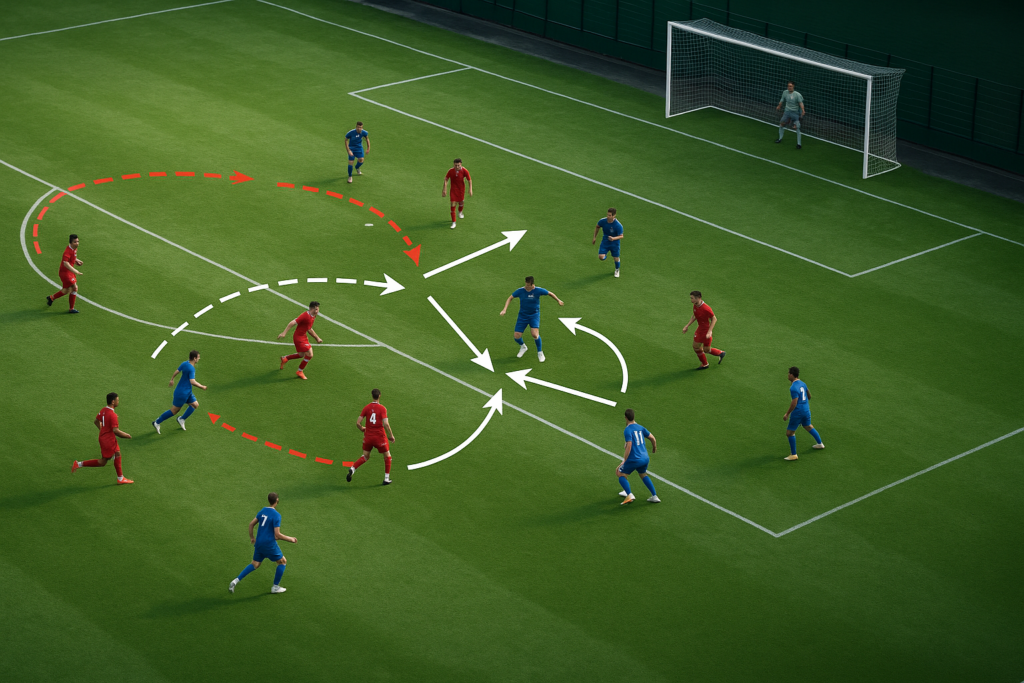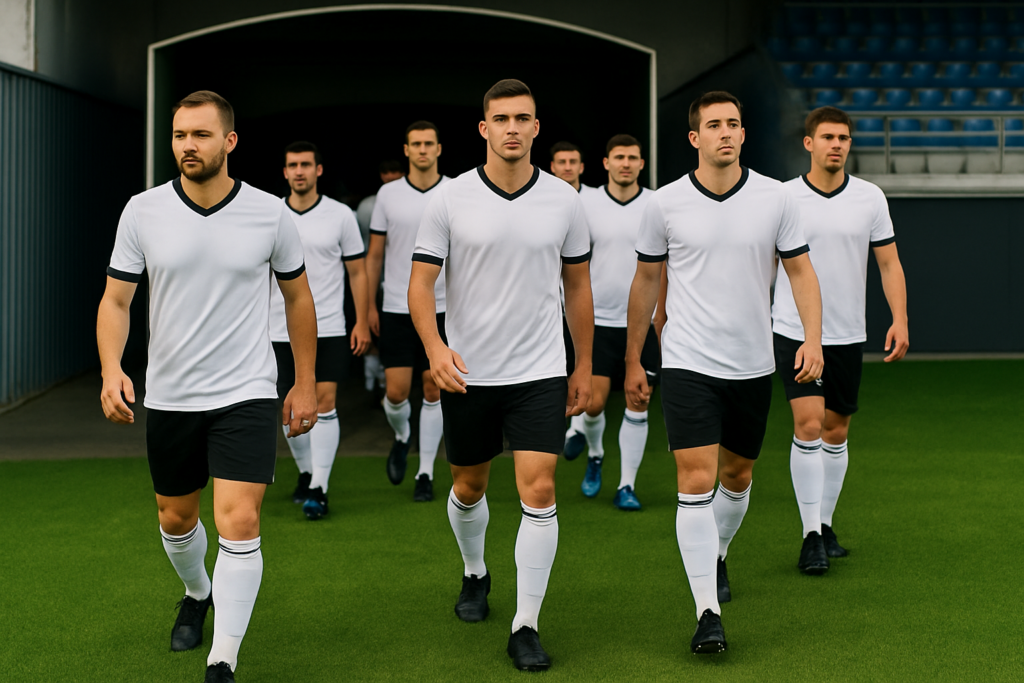
The summer break is drawing to a close, the pitches are slowly filling up again, and the scent of freshly cut grass is in the air – it's time to plan pre-season preparation! For ambitious amateur clubs, this phase is far more than just a light run-out. It's the foundation for a successful season, the key to fitness, tactical finesse, and strong team spirit. In this guide, we'll show you how to structure an optimal pre-season, which elements are essential, and how to get the most out of your team.
Many only think of grueling runs when they hear "pre-season." But it's so much more:
Those who slack off here will find it difficult to achieve their goals during the season. Well-planned pre-season preparation is therefore not a luxury, but a necessity.
A typical pre-season in amateur football lasts 6-8 weeks and can be roughly divided into three phases:

Successful pre-season preparation is based on four essential pillars:
2. Technique:
3. Tactics:
4. Mental Strength & Team Building:

In addition to the four main pillars of training, nutrition and recovery play an often underestimated but crucial role, especially during the intensive pre-season phase:
Those who consider these aspects give their body the best conditions to cope with the high demands of pre-season and start the season fitter.
Planning a good pre-season is the first step to success:

Video analysis can also offer enormous added value in the amateur sector in order to improve tactical aspects and individual performances. While simple mobile phone recordings of training sessions or test matches can already provide initial insights, specialised companies such as zone14 often offer more accessible and professional solutions for amateur clubs to get the best out of video recordings.
The integration of video analysis, ideally with professional support from a provider such as zone14, can significantly improve the quality of your preseason preparation. It enables deeper tactical training, more individualized player development, and a more objective assessment of performance —even with the limited resources of an amateur club. Find out which packages or services are suitable and affordable for your club.

This is an example for an ambitious amateur club with 3 training sessions + a match:
Important: This is just a template! Adjust the content and intensities to your team's performance level and the respective pre-season phase. Ensure sufficient recovery times and consider the individual needs of your players.
Planning an ambitious pre-season is one thing, successfully implementing it is another. Here are some pitfalls to avoid:
The intensive pre-season is over, the foundations are laid – but what's next? The transition into the season requires a smart adjustment of training and load:
The start of the season is not the end of the work, but the beginning of a new phase in which the fruits of hard pre-season labor are to be harvested.

Carefully planned and executed pre-season preparation is the cornerstone of success in amateur football. It requires commitment from coaches and players but pays off in terms of fitness, tactical understanding, team spirit, and ultimately, better results on the pitch. Considering aspects like nutrition, recovery, fun, and a smart transition into the season, supplemented by modern tools like video analysis – possibly with support from specialized providers like zone14 – can further optimize this process. Use the principles presented here to optimally plan your pre-season preparation and best prepare your team for the upcoming challenges. Good luck!